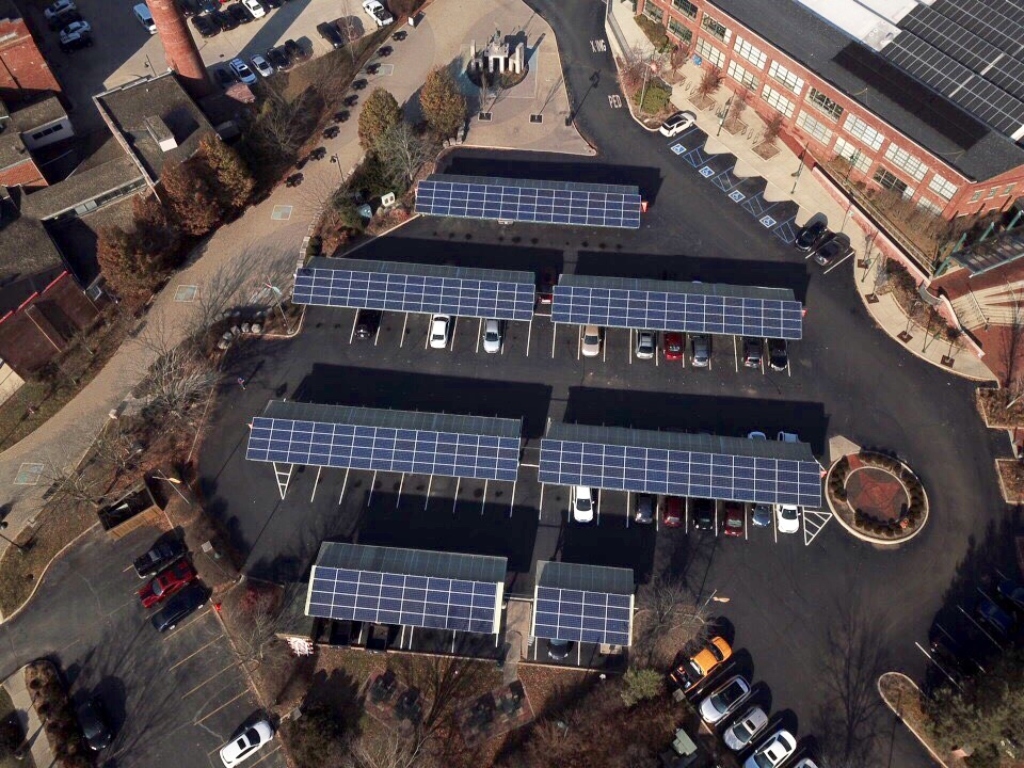Solar energy is a growth industry in Indiana. While comprising less than 1 percent of all electricity generation in the state in 2020, solar is poised to grow substantially in the next decade as Indiana utility companies, Hoosier businesses, and residents take advantage of cost-competitive renewable energy.
Facilitating solar development in your Indiana community
This trend presents an opportunity for Indiana businesses, residents, and local governments to facilitate economic development and support homegrown energy that is substantially cheaper and more environmentally-friendly than fossil fuels.
According to the Solar Energy Industries Association, the Hoosier state is projected to more than triple its current solar capacity over the next five years. Long-term, solar generation in the state is expected to grow thirtyfold.
Indiana solar facts
939 megawatts Indiana’s solar generation capacity as of March 2021.
111,163number of homes Indiana solar energy could power as of March 2021.
2.3 gigawattssolar capacity to be brought online by utility company Northern Indiana Public Service Company by 2028.
4 gigawattsexpected solar capacity to be installed in Indiana by 2026.
A model solar ordinance
Every county in Indiana possesses abundant solar resources. Counties that have an ordinance or long-term plan in place before developers come to town can simplify the approval process and send a signal that their communities are interested in solar development.
To help local governments maximize the economic and environmental benefits of solar energy, ERI and the Great Plains Institute (GPI) produced a model solar ordinance for Indiana local governments. Developed by experts with input from local stakeholders, the model ordinance contains zoning language for utility-scale and on-site installations and reflects Indiana-specific statutes, practices, and community priorities currently seen in the state. The ordinance also provides context about policy choices to help guide community decision making and addresses potential conflicts in solar regulation, such as land use, setbacks, screening barriers, and landscaping.
Local planning authorities can customize and adapt the model ordinance language to fit the needs and priorities of their communities. It is not intended to be a one-size-fits-all document and includes suggested, not required, language.
What the Indiana model solar ordinance is:
- a framework for local planning authorities to consult as they start to develop their own solar ordinance
- a reflection of best practices that adheres to Indiana state law
- a reference for how to address potential controversies and opportunities to make solar development more predictable, solar land use regulation more transparent, and regulatory standards more consistent

Who benefits from solar energy?
All Hoosiers receive some benefit from expanded solar generation in Indiana. Those benefits come in many forms, including green jobs, lower energy bills, and cleaner air and water.
Economic benefits – Solar energy creates local jobs for Hoosiers who install and maintain installations. For homeowners and businesses, solar can provide energy independence and lower energy bills. It can also be a reliable source of income for farmers who want to diversify their income streams by making their land available to solar developers.
Local government benefits – Local governments can benefit from solar development by collecting tax revenue from utility-scale operations that can help fund public services and lower tax rates. If a local government owns its solar installations, it will reduce its energy bill and potentially be able to sell excess energy back to its power provider.
Environmental benefits – Unlike fossil energy, solar energy is freely available and doesn’t require disturbing the environment to extract. Solar installations also produce no toxic pollutants that affect human health and emit no heat-trapping gases that contribute to climate change. Furthermore, solar farms can be paired with regionally-appropriate plants or pollinator-friendly habitat to improve soil and water quality and bolster pollinator species that contribute to agriculture and provide other ecological benefits.
More resources from ERI and GPI
In addition to a model solar ordinance, ERI and GPI produced an Indiana Renewable Energy Guide. The guide gives Indiana communities a long-range perspective on utility- and community-scale renewable energy markets and development trends, addressing topics such as siting authority, incentives, and energy-generation potential of solar and wind.


